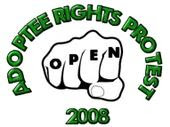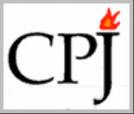 SUNDAY LONDON TIMES
SUNDAY LONDON TIMESJanuary 13, 2008
Foetal Attraction
The revelation that a pair of twins had inadvertently married raises questions about the attraction of siblings who suffer separation and how the IVF explosion could lead to more such cases
Richard Woods and Claire Newell
Imagine what they thought, imagine the turmoil they endured. They are the twins who, it emerged on Friday, were separated at birth and given up for adoption only to meet by chance years later - and marry.
The man and woman, unaware that they were brother and sister, had grown up separately, perhaps far apart, in different families. Yet when fate brought them together again, they experienced an uncanny bond and a sexual attraction.
As Lord Alton, who revealed the case, said: “They were never told they were twins. They met later in life and felt an inevitable attraction.”
Did they sense some blood relationship? It certainly must have seemed odd: both had been born on the same day in the same year. Did they just take that as an incredible, happy coincidence? Did they not know they were adopted? Or did they suspect they were related, only for the power of their attraction to prove overwhelming?
According to Alton, who was told about the case by a judge, the couple married and only later discovered that they were twins. “The judge had to deal with the consequences of their marriage, and all the issues of their separation,” he said.
“For them it was a terrible tragedy. It was an incredibly heartrending experience.”
The marriage was annulled at a special hearing in the High Court last year with the judge ruling it had never been valid. Under the 1986 Marriage Act, it is illegal to marry your sibling, parent, grandparent, grandchild and various other blood relatives.
The identity of the twins has not been revealed, nor their ages or where they are from. Nor is it known how they met or how they found out that they are twins. Experts, however, suspect they must be at least 30 because the law on adoption changed in 1976, making it much easier for adopted children to discover their biological parents. Since then, too, every effort has been made to keep together siblings put up for adoption.
Alton raised the case in the House of Lords not for its own sake but to draw attention to a wider issue. He believes that the risk of siblings unwittingly marrying each other is rising fast because of the prevalence of IVF treatment.
Since 1991 more than 27,000 babies have been born from donated sperm, eggs and embryos. As a result there may be thousands of people who unwittingly share one parent - and who may one day meet and fall in love.
What are the risks? Do such unwitting siblings have a special attraction to each other? And does the law need to be changed so that birth certificates always make it clear who a child’s biological parents are?
THE extraordinary case of the twins who married is not the first time a brother and sister have been lovers without knowing their blood relationship. In one case in the US, a Polish couple had 13 children and gave up nine for adoption.
They were all placed with families in a fairly small geographical area. Some of the children were later told they had been adopted, others were not.
Gary Klahr grew up not knowing he was adopted and in 1979 he met and dated Micka Zeman. They had a relationship for six months - and only later found out they were brother and sister.
“My relationship with my sister is the kind of thing that could have you jumping out of the window,” he said later. “But we didn’t know. Thank God we didn’t get married.”
Klahr also learnt that his best friend, a man he had met by chance in a bar, was in fact one of his brothers.
In Britain, William and Annette Watch had their marriage annulled in 1971 after it turned out that they were half-brother and half-sister. Soon after William was born, his parents separated and William was put into care. Later he went to boarding school and joined the army.
He fell in love with Annette, whom he believed to be the daughter of Leslie Ingham, a married man who had also begun a relationship with William’s mother. In fact, Annette was the daughter of Ingham and William’s mother - making her William’s half-sister.
When a court declared their marriage incestuous, Annette said: “I dream of having children. But it’s Bill I want first. We’ve been so happy together and just can’t bear it.”
Yesterday a media scrum descended on the house of Bill and Anne Watch in Andover, believing them to be the couple. Neighbours said that they had lived there for decades and had brought up two boys. Whether they were adopted or not is unclear.
Alton also says he has been told by a law professor of another incident in Britain where a teenage couple, at least one of whom was adopted, planned to marry, but because of their ages detailed checks were made on their parentage. It turned out that they were brother and sister, and the marriage did not go ahead.
With identical twins, there are powerful reasons for a special relationship - even if they have been separated. Having come from a single egg and sperm, they have the same genetic make-up, which exerts a profound influence on their lives even if they have been brought up in different circumstances.
However, with fraternal twins - who come from two eggs - and ordinary siblings, fewer genes are shared and there is no obvious reason why there should be an innate powerful attraction. Yet researchers believe that a peculiar syndrome does exist in cases where close relatives meet after being separated in childhood.
Glenn Wilson, a reader in personality at the Institute of Psychiatry, said: “It’s now a widely recognised phenomenon that if you meet someone you have been separated from as a child you may find you are extremely attracted to them. It’s known as Genetic Sexual Attraction, but it’s genetic only in that you are closely related to that person - it is not necessarily caused by strictly genetic factors. It could be caused by a very early experience of close family, which sets up your blueprint of what would be a good mate later on.
“People who meet family members later in life have described how they feel a ‘bolt of lightning’. ”
Ivor Lytton was one of those who experienced the thunderbolt. In 1998 Lytton, from Edinburgh, met Rita Meadows, who had grown up in South Africa, at a dinner party in Scotland. Lytton had organised the event after tracing Meadows, who had been adopted as a baby. She was his sister - but he had no idea how powerful the effect of meeting her would be.
“From the moment we met, I was smitten,” he said later. “She put a smile in my heart and a spring in my step.”
It nearly ruined his marriage and his life. “I didn’t choose to fall in love with her, or expect to feel sexual desire. It just happened,” he said. “Even in front of my wife, I made no attempt to hide my adoration.”
The danger is that siblings, unaware of their relationship, may marry and have children. The similarity in their DNA poses significant health risks.
“Siblings share half their genes just like a parent and offspring,” said Steve Jones, professor of genetics at University College London.
“So the problems which could arise from having a child with your brother and sister and having one with a parent are the same. There is little data for the implications of sibling marriage, but we know that whatever the childhood death rate is in a country, it is doubled if a child is born from two cousins.
“If a child is born from two siblings, the risks are likely to increase further. Many of us have recessive genes for genetic disorders like cystic fibrosis. Ifa person who has one of these genes has a child with a cousin or a sibling the chance of disability or death increases.”
UNDER current law, couples who conceive children using donor eggs or sperm do not have to tell the child or register the fact on the birth certificate.
People conceived since April 2005 from donated sperm or eggs have a right to know their biological parents’ identity once they reach 18 - but there is no requirement to tell them. They may not suspect that whoever brought them up is not their biological originator.
Alton and others are challenging the Human Fertilisation and Embryology Bill now going through parliament. They argue that in the age of IVF it is more important than ever for children to know their biological past.
“There needs to be more clarity in public records,” said Alton. “This is to prevent incestuous relationships, but also for reasons of genetics and disease prevention.”
Such is the scale of IVF now that in America one donor recently calculated that he could theoretically have fathered 4,960 children after 15 years of donating sperm. “That’s the top mathematical possibility,” he said. After taking into account failure rates and other variables, he put a more realistic estimate at 432.
In Britain, donors are restricted to 10 offspring. Nevertheless, it still means the risks of half-brothers and half-sisters meeting are rising fast.
However, some experts argue that forcing parents to record the full biological origins of children on birth certificates could sow even more confusion and family disruption. They point out that in an estimated 3%-10% of ordinary births, the husband or partner of the mother is not the true father of the child.
Stephen Hopwood, of Stowe Family Law in Harrogate, believes the current system gives sufficient protection. “You have to appreciate that [the case of the twins] is almost ludicrously farfetched, and a kneejerk reaction to difficult cases always makes bad law.”
He believes the laws on adoption have made such cases highly unlikely. “Prior to 1976, if you gave a child up for adoption, that was it, you never saw the child again. Since the 1976 Adoption Act, records are kept in a stricter way and it is easier for children to trace their biological parents.”
Mo O’Reilly, director of child placement for the British Association for Adoption & Fostering, said: “This situation is traumatic for the people involved, but incredibly rare. Today adopted children grow up with a greater knowledge of their birth families - and organisations try to place brothers and sisters together.”
But for anyone adopted before 1976, finding their biological parents is much more convoluted. And that may be why the twins who married did not discover their relationship until it was too late.
Additional reporting: Abul Taher
Interview with Paula Bernstein and Elyse Schein
Link to article








1 comment:
Isn't it the case that problem with incestuous marriage and inherited health problems tends to be more of an issue in endogamic communities or groups where it happens over and over again within the same family, e.g. the European Royal families?
In exogamous cultures such as ours the problem is the social stigma that traditionally surrounds incest even when it is accidental incest as a result of the parties involved, not knowing that they are within the prohibited degree of consanguinity
That adoption is still set up in such a way that it is possible for people to marry not knowing that they are brother and sister is an absolute disgrace in modern Britain. I wrote to Alan Milburn the then Secretary of State for Health and Social Services about this via my MP, at the time of the Adoption and Children Bill. He signed the Bill off as conforming to the Human Rights Act, which of course in this respect, it does not. We did not get an answer from Milburn. Jacquie Smith the health minister overseeing the second Bill was equally unconcerned at the time
Under the current legislation here in England, quote
10 Incest by a man
(1)It is an offence for a man to have sexual intercourse with a woman whom he knows to be his grand-daughter, daughter, sister or mother.
(2)In the foregoing subsection “sister” includes half-sister, and for the purposes of that subsection any expression importing a relationship between two people shall be taken to apply notwithstanding that the relationship is not traced through lawful wedlock.
11 Incest by a woman
(1)It is an offence for a woman of the age of sixteen or over to permit a man whom she knows to be her grandfather, father, brother or son to have sexual intercourse with her by her consent.
(2)In the foregoing subsection “brother” includes half-brother, and for the purposes of that subsection any expression importing a relationship between two people shall be taken to apply notwithstanding that the relationship is not traced through lawful wedlock.
So therefore although they may have lived a normal married live and have perfectly happy healthy children, not knowing them selves to be brother and sister, once they discover their genetic relationship, any kind of normal married life between them becomes a criminal offence!
At least this case and the publicity that it has attracted in the media across the world may help to get the adoption laws changed and the necessary amendment to Sexual Offences Act to ensure that no one is ever prosecuted for accidental incest
So from the point of view of legality, if you are a couple in that situation, in many ways it's best not to know
However if you were born to a mother or father who is a carrier of an inherited disease, it is quit important that you do know. You can then at least have a chance to have early foetal tests to decide whether to continue a pregnancy. If you have religious or ethical objections to termination of pregnancy you can be tested yourself and avoid having children if you are positive and don't want to risk having a child who is affected
Of course what is so for adoptees in this respect, is also so for those born as a result of gamete donation. We all need to know who our genetic parents are, that is surely the most basic of human rights
Post a Comment